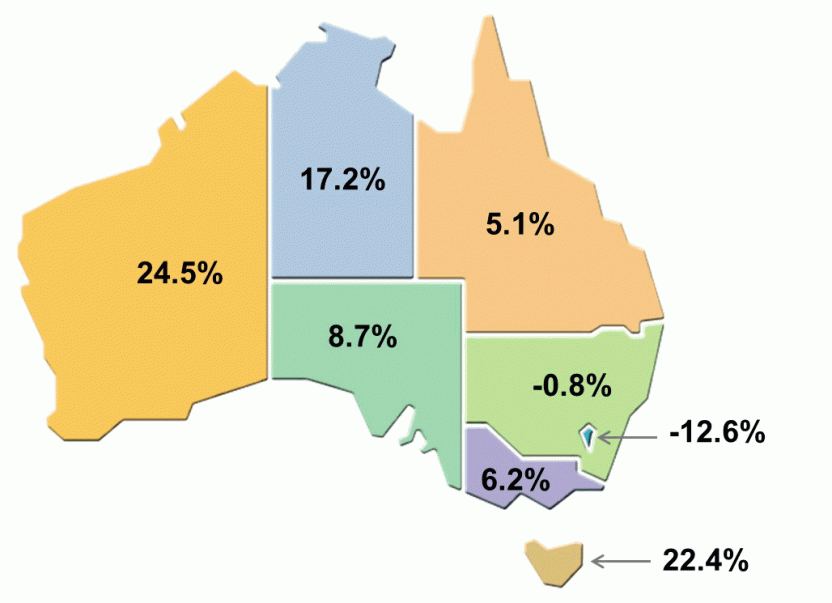13.1 Short-term visitor arrivals, Australia - December 1979 to December 2019 - year ending
[["Dec-79","Jan-80","Feb-80","Mar-80","Apr-80","May-80","Jun-80","Jul-80","Aug-80","Sep-80","Oct-80","Nov-80","Dec-80","Jan-81","Feb-81","Mar-81","Apr-81","May-81","Jun-81","Jul-81","Aug-81","Sep-81","Oct-81","Nov-81","Dec-81","Jan-82","Feb-82","Mar-82","Apr-82","May-82","Jun-82","Jul-82","Aug-82","Sep-82","Oct-82","Nov-82","Dec-82","Jan-83","Feb-83","Mar-83","Apr-83","May-83","Jun-83","Jul-83","Aug-83","Sep-83","Oct-83","Nov-83","Dec-83","Jan-84","Feb-84","Mar-84","Apr-84","May-84","Jun-84","Jul-84","Aug-84","Sep-84","Oct-84","Nov-84","Dec-84","Jan-85","Feb-85","Mar-85","Apr-85","May-85","Jun-85","Jul-85","Aug-85","Sep-85","Oct-85","Nov-85","Dec-85","Jan-86","Feb-86","Mar-86","Apr-86","May-86","Jun-86","Jul-86","Aug-86","Sep-86","Oct-86","Nov-86","Dec-86","Jan-87","Feb-87","Mar-87","Apr-87","May-87","Jun-87","Jul-87","Aug-87","Sep-87","Oct-87","Nov-87","Dec-87","Jan-88","Feb-88","Mar-88","Apr-88","May-88","Jun-88","Jul-88","Aug-88","Sep-88","Oct-88","Nov-88","Dec-88","Jan-89","Feb-89","Mar-89","Apr-89","May-89","Jun-89","Jul-89","Aug-89","Sep-89","Oct-89","Nov-89","Dec-89","Jan-90","Feb-90","Mar-90","Apr-90","May-90","Jun-90","Jul-90","Aug-90","Sep-90","Oct-90","Nov-90","Dec-90","Jan-91","Feb-91","Mar-91","Apr-91","May-91","Jun-91","Jul-91","Aug-91","Sep-91","Oct-91","Nov-91","Dec-91","Jan-92","Feb-92","Mar-92","Apr-92","May-92","Jun-92","Jul-92","Aug-92","Sep-92","Oct-92","Nov-92","Dec-92","Jan-93","Feb-93","Mar-93","Apr-93","May-93","Jun-93","Jul-93","Aug-93","Sep-93","Oct-93","Nov-93","Dec-93","Jan-94","Feb-94","Mar-94","Apr-94","May-94","Jun-94","Jul-94","Aug-94","Sep-94","Oct-94","Nov-94","Dec-94","Jan-95","Feb-95","Mar-95","Apr-95","May-95","Jun-95","Jul-95","Aug-95","Sep-95","Oct-95","Nov-95","Dec-95","Jan-96","Feb-96","Mar-96","Apr-96","May-96","Jun-96","Jul-96","Aug-96","Sep-96","Oct-96","Nov-96","Dec-96","Jan-97","Feb-97","Mar-97","Apr-97","May-97","Jun-97","Jul-97","Aug-97","Sep-97","Oct-97","Nov-97","Dec-97","Jan-98","Feb-98","Mar-98","Apr-98","May-98","Jun-98","Jul-98","Aug-98","Sep-98","Oct-98","Nov-98","Dec-98","Jan-99","Feb-99","Mar-99","Apr-99","May-99","Jun-99","Jul-99","Aug-99","Sep-99","Oct-99","Nov-99","Dec-99","Jan-00","Feb-00","Mar-00","Apr-00","May-00","Jun-00","Jul-00","Aug-00","Sep-00","Oct-00","Nov-00","Dec-00","Jan-01","Feb-01","Mar-01","Apr-01","May-01","Jun-01","Jul-01","Aug-01","Sep-01","Oct-01","Nov-01","Dec-01","Jan-02","Feb-02","Mar-02","Apr-02","May-02","Jun-02","Jul-02","Aug-02","Sep-02","Oct-02","Nov-02","Dec-02","Jan-03","Feb-03","Mar-03","Apr-03","May-03","Jun-03","Jul-03","Aug-03","Sep-03","Oct-03","Nov-03","Dec-03","Jan-04","Feb-04","Mar-04","Apr-04","May-04","Jun-04","Jul-04","Aug-04","Sep-04","Oct-04","Nov-04","Dec-04","Jan-05","Feb-05","Mar-05","Apr-05","May-05","Jun-05","Jul-05","Aug-05","Sep-05","Oct-05","Nov-05","Dec-05","Jan-06","Feb-06","Mar-06","Apr-06","May-06","Jun-06","Jul-06","Aug-06","Sep-06","Oct-06","Nov-06","Dec-06","Jan-07","Feb-07","Mar-07","Apr-07","May-07","Jun-07","Jul-07","Aug-07","Sep-07","Oct-07","Nov-07","Dec-07","Jan-08","Feb-08","Mar-08","Apr-08","May-08","Jun-08","Jul-08","Aug-08","Sep-08","Oct-08","Nov-08","Dec-08","Jan-09","Feb-09","Mar-09","Apr-09","May-09","Jun-09","Jul-09","Aug-09","Sep-09","Oct-09","Nov-09","Dec-09","Jan-10","Feb-10","Mar-10","Apr-10","May-10","Jun-10","Jul-10","Aug-10","Sep-10","Oct-10","Nov-10","Dec-10","Jan-11","Feb-11","Mar-11","Apr-11","May-11","Jun-11","Jul-11","Aug-11","Sep-11","Oct-11","Nov-11","Dec-11","Jan-12","Feb-12","Mar-12","Apr-12","May-12","Jun-12","Jul-12","Aug-12","Sep-12","Oct-12","Nov-12","Dec-12","Jan-13","Feb-13","Mar-13","Apr-13","May-13","Jun-13","Jul-13","Aug-13","Sep-13","Oct-13","Nov-13","Dec-13","Jan-14","Feb-14","Mar-14","Apr-14","May-14","Jun-14","Jul-14","Aug-14","Sep-14","Oct-14","Nov-14","Dec-14","Jan-15","Feb-15","Mar-15","Apr-15","May-15","Jun-15","Jul-15","Aug-15","Sep-15","Oct-15","Nov-15","Dec-15","Jan-16","Feb-16","Mar-16","Apr-16","May-16","Jun-16","Jul-16","Aug-16","Sep-16","Oct-16","Nov-16","Dec-16","Jan-17","Feb-17","Mar-17","Apr-17","May-17","Jun-17","Jul-17","Aug-17","Sep-17","Oct-17","Nov-17","Dec-17","Jan-18","Feb-18","Mar-18","Apr-18","May-18","Jun-18","Jul-18","Aug-18","Sep-18","Oct-18","Nov-18","Dec-18","Jan-19","Feb-19","Mar-19","Apr-19","May-19","Jun-19","Jul-19","Aug-19","Sep-19","Oct-19","Nov-19","Dec-19"],[[0.79334499999999997],[0.80474400000000001],[0.82662500000000005],[0.84807399999999999],[0.854236],[0.86044699999999996],[0.87673500000000004],[0.88390999999999997],[0.88706700000000005],[0.88996799999999998],[0.895845],[0.90062600000000004],[0.90455799999999997],[0.90814899999999998],[0.90464299999999997],[0.90214799999999995],[0.90818399999999999],[0.91064100000000003],[0.91350100000000001],[0.91736799999999996],[0.92239700000000002],[0.92430599999999996],[0.93269599999999997],[0.93625499999999995],[0.93672699999999998],[0.94638900000000004],[0.94689699999999999],[0.94708899999999996],[0.96197200000000005],[0.96057999999999999],[0.95159000000000005],[0.95401499999999995],[0.95477299999999998],[0.95806500000000006],[0.955955],[0.95613099999999995],[0.95467400000000002],[0.95635499999999996],[0.95555800000000002],[0.94680399999999998],[0.934473],[0.93123],[0.930365],[0.93076300000000001],[0.93555299999999997],[0.93259099999999995],[0.934114],[0.93790200000000001],[0.94388300000000003],[0.94165399999999999],[0.94778300000000004],[0.95440800000000003],[0.96734200000000004],[0.98039299999999996],[0.99235899999999999],[0.993788],[0.98835799999999996],[0.99390299999999998],[1.0009950000000001],[1.0070129999999999],[1.015085],[1.019001],[1.0332429999999999],[1.056262],[1.0568500000000001],[1.0609679999999999],[1.0617019999999999],[1.059382],[1.0671330000000001],[1.07575],[1.094652],[1.118231],[1.1425609999999999],[1.1579820000000001],[1.1772050000000001],[1.2012929999999999],[1.228024],[1.2441120000000001],[1.263498],[1.2898890000000001],[1.3121210000000001],[1.3298179999999999],[1.3544080000000001],[1.3892420000000001],[1.429376],[1.471103],[1.500942],[1.5166599999999999],[1.5387919999999999],[1.5677939999999999],[1.5895049999999999],[1.622009],[1.6573560000000001],[1.6903969999999999],[1.7258370000000001],[1.752186],[1.7849029999999999],[1.806508],[1.8390500000000001],[1.8790929999999999],[1.906833],[1.9432020000000001],[1.990502],[2.0518190000000001],[2.108279],[2.1598929999999998],[2.2014339999999999],[2.2263299999999999],[2.249282],[2.2568800000000002],[2.2675450000000001],[2.2623250000000001],[2.261978],[2.2414230000000002],[2.2203089999999999],[2.1923780000000002],[2.1568870000000002],[2.1271710000000001],[2.0939679999999998],[2.078649],[2.080276],[2.0875360000000001],[2.0892819999999999],[2.0983290000000001],[2.1192579999999999],[2.1325759999999998],[2.1471939999999998],[2.157133],[2.1739090000000001],[2.186731],[2.2033019999999999],[2.2091989999999999],[2.2149179999999999],[2.2161219999999999],[2.2138979999999999],[2.2140219999999999],[2.2009620000000001],[2.212488],[2.2273800000000001],[2.2503449999999998],[2.2714759999999998],[2.306108],[2.3314539999999999],[2.3567529999999999],[2.370371],[2.3890539999999998],[2.4367290000000001],[2.4653450000000001],[2.5011749999999999],[2.5149970000000001],[2.5197120000000002],[2.530656],[2.5304289999999998],[2.5230830000000002],[2.5364399999999998],[2.567618],[2.6032679999999999],[2.649931],[2.6571389999999999],[2.6972900000000002],[2.719776],[2.7579609999999999],[2.7855970000000001],[2.810956],[2.851807],[2.8858160000000002],[2.9237060000000001],[2.9545729999999999],[2.996213],[3.0039850000000001],[3.062808],[3.1122589999999999],[3.1410710000000002],[3.1426050000000001],[3.1689600000000002],[3.2068500000000002],[3.232348],[3.2622879999999999],[3.2966669999999998],[3.3217539999999999],[3.3617210000000002],[3.4149509999999998],[3.4297209999999998],[3.4358620000000002],[3.474891],[3.5047609999999998],[3.5352649999999999],[3.5824989999999999],[3.6219709999999998],[3.6365729999999998],[3.6556380000000002],[3.6875719999999998],[3.7258249999999999],[3.7392759999999998],[3.8129149999999998],[3.8649279999999999],[3.9039679999999999],[3.9206699999999999],[3.9661620000000002],[3.994653],[4.0189849999999998],[4.059571],[4.0892749999999998],[4.1219109999999999],[4.1648250000000004],[4.1905029999999996],[4.2057779999999996],[4.2311269999999999],[4.2238249999999997],[4.2514089999999998],[4.2526539999999997],[4.291779],[4.2929760000000003],[4.3147570000000002],[4.3308710000000001],[4.3347619999999996],[4.3178700000000001],[4.3212130000000002],[4.2668590000000002],[4.2145130000000002],[4.2296909999999999],[4.2239890000000004],[4.2200059999999997],[4.1949529999999999],[4.1881969999999997],[4.1811249999999998],[4.1694009999999997],[4.1578520000000001],[4.1672060000000002],[4.1719520000000001],[4.2169090000000002],[4.2673680000000003],[4.2604280000000001],[4.2751650000000003],[4.2880260000000003],[4.3041770000000001],[4.3361099999999997],[4.3653760000000004],[4.4076019999999998],[4.456366],[4.4595029999999998],[4.469328],[4.5053559999999999],[4.5282030000000004],[4.5996829999999997],[4.6208970000000003],[4.6517850000000003],[4.6923599999999999],[4.7096010000000001],[4.7594390000000004],[4.7889720000000002],[4.8322089999999998],[4.9313690000000001],[4.9871689999999997],[4.9817729999999996],[4.9986569999999997],[4.9984190000000002],[5.0092540000000003],[5.0313280000000002],[5.0491760000000001],[5.0609169999999999],[5.0242420000000001],[4.9762050000000002],[4.892487],[4.8557449999999998],[4.8184360000000002],[4.8264769999999997],[4.8442259999999999],[4.7991549999999998],[4.7989179999999996],[4.7682929999999999],[4.7395779999999998],[4.7269230000000002],[4.7192030000000003],[4.7695869999999996],[4.8304169999999997],[4.8411910000000002],[4.8585450000000003],[4.8487879999999999],[4.794759],[4.7559639999999996],[4.6869209999999999],[4.6558010000000003],[4.6531479999999998],[4.6434579999999999],[4.6704869999999996],[4.6769590000000001],[4.7132199999999997],[4.7458539999999996],[4.7693810000000001],[4.7967149999999998],[4.8365229999999997],[4.9177989999999996],[4.9981540000000004],[5.0571609999999998],[5.1092019999999998],[5.1500120000000003],[5.1579249999999996],[5.1699710000000003],[5.174709],[5.1994980000000002],[5.2362489999999999],[5.2802090000000002],[5.3500230000000002],[5.3538129999999997],[5.3638469999999998],[5.3735749999999998],[5.4030670000000001],[5.4292740000000004],[5.4478270000000002],[5.4623160000000004],[5.4549620000000001],[5.4628259999999997],[5.4672989999999997],[5.4535239999999998],[5.4248750000000001],[5.4533379999999996],[5.4449889999999996],[5.4476440000000004],[5.4287929999999998],[5.4097280000000003],[5.4211200000000002],[5.432188],[5.4515149999999997],[5.4931349999999997],[5.4827709999999996],[5.5079440000000002],[5.5545200000000001],[5.5544219999999997],[5.5762099999999997],[5.5945099999999996],[5.5991049999999998],[5.6236579999999998],[5.6343040000000002],[5.6302130000000004],[5.6394299999999999],[5.6133860000000002],[5.6029850000000003],[5.6392230000000003],[5.6329250000000002],[5.6222899999999996],[5.6375849999999996],[5.6220819999999998],[5.6697470000000001],[5.6537509999999997],[5.6196549999999998],[5.6065529999999999],[5.5776909999999997],[5.5746630000000001],[5.5859129999999997],[5.5412679999999996],[5.5143899999999997],[5.5429089999999999],[5.5358080000000003],[5.5156289999999997],[5.4441379999999997],[5.4385380000000003],[5.4758190000000004],[5.5048950000000003],[5.5198010000000002],[5.5573600000000001],[5.5541919999999996],[5.6125499999999997],[5.6520380000000001],[5.6281100000000004],[5.6301509999999997],[5.67157],[5.7235329999999998],[5.7616899999999998],[5.8000790000000002],[5.809723],[5.8425609999999999],[5.8715619999999999],[5.8966289999999999],[5.9016479999999998],[5.8754169999999997],[5.9068360000000002],[5.9163870000000003],[5.9003680000000003],[5.8950880000000003],[5.9107830000000003],[5.8661440000000002],[5.8712099999999996],[5.8758780000000002],[5.8723080000000003],[5.9005190000000001],[5.9011189999999996],[5.9448489999999996],[5.9496279999999997],[5.9585470000000003],[5.9913790000000002],[5.9855919999999996],[6.0173259999999997],[6.0617570000000001],[6.0832360000000003],[6.1205780000000001],[6.1671079999999998],[6.1537889999999997],[6.2050150000000004],[6.250057],[6.2464979999999999],[6.2663970000000004],[6.2934070000000002],[6.3244569999999998],[6.3550649999999997],[6.3734869999999999],[6.395238],[6.4132619999999996],[6.4816979999999997],[6.5555320000000004],[6.5761940000000001],[6.5881480000000003],[6.6551669999999996],[6.7147079999999999],[6.7250819999999996],[6.7838219999999998],[6.7953789999999996],[6.8232350000000004],[6.8671540000000002],[6.9002610000000004],[6.9223340000000002],[6.9072579999999997],[6.9956849999999999],[7.0741290000000001],[7.0957239999999997],[7.108511],[7.1387669999999996],[7.1773879999999997],[7.2106209999999997],[7.2608639999999998],[7.2999850000000004],[7.36029],[7.4497749999999998],[7.5200089999999999],[7.5925549999999999],[7.6706329999999996],[7.730982],[7.7866010000000001],[7.8535180000000002],[7.9410290000000003],[7.9990259999999997],[8.074071],[8.1441970000000001],[8.1944859999999995],[8.2693150000000006],[8.3756389999999996],[8.3646119999999993],[8.3794989999999991],[8.4690100000000008],[8.5068199999999994],[8.5577620000000003],[8.5883880000000001],[8.6591539999999991],[8.6757039999999996],[8.7211390000000009],[8.7764009999999999],[8.8153000000000006],[8.7938899999999993],[8.9208400000000001],[9.0209620000000008],[9.0007339999999996],[9.0310919999999992],[9.071733],[9.0996889999999997],[9.1385000000000005],[9.1651000000000007],[9.1776979999999995],[9.2027719999999995],[9.2456270000000007],[9.2741799999999994],[9.2868960000000005],[9.2508909999999993],[9.2714770000000009],[9.3303060000000002],[9.3439890000000005],[9.3600060000000003],[9.4074960000000001],[9.4122640000000004],[9.4323259999999998],[9.4460700000000006],[9.4658940000000005]]]
[]
[{"axis_id":"0","tick_interval":"24","axis_min":"","axis_max":"","axis_title":"","precision":-1,"axis_units":"","tooltip_units":"","table_units":"","data_unit_prefix":"","data_unit_suffix":"","reverse_axis":false}][{"axis_id":"0","tick_interval":"1","axis_min":"0","axis_max":"10","axis_title":"Millions","precision":"1","table_units":"(m)","tooltip_units":"(m)","axis_units":"","data_unit_prefix":"","data_unit_suffix":"","reverse_axis":false}]
